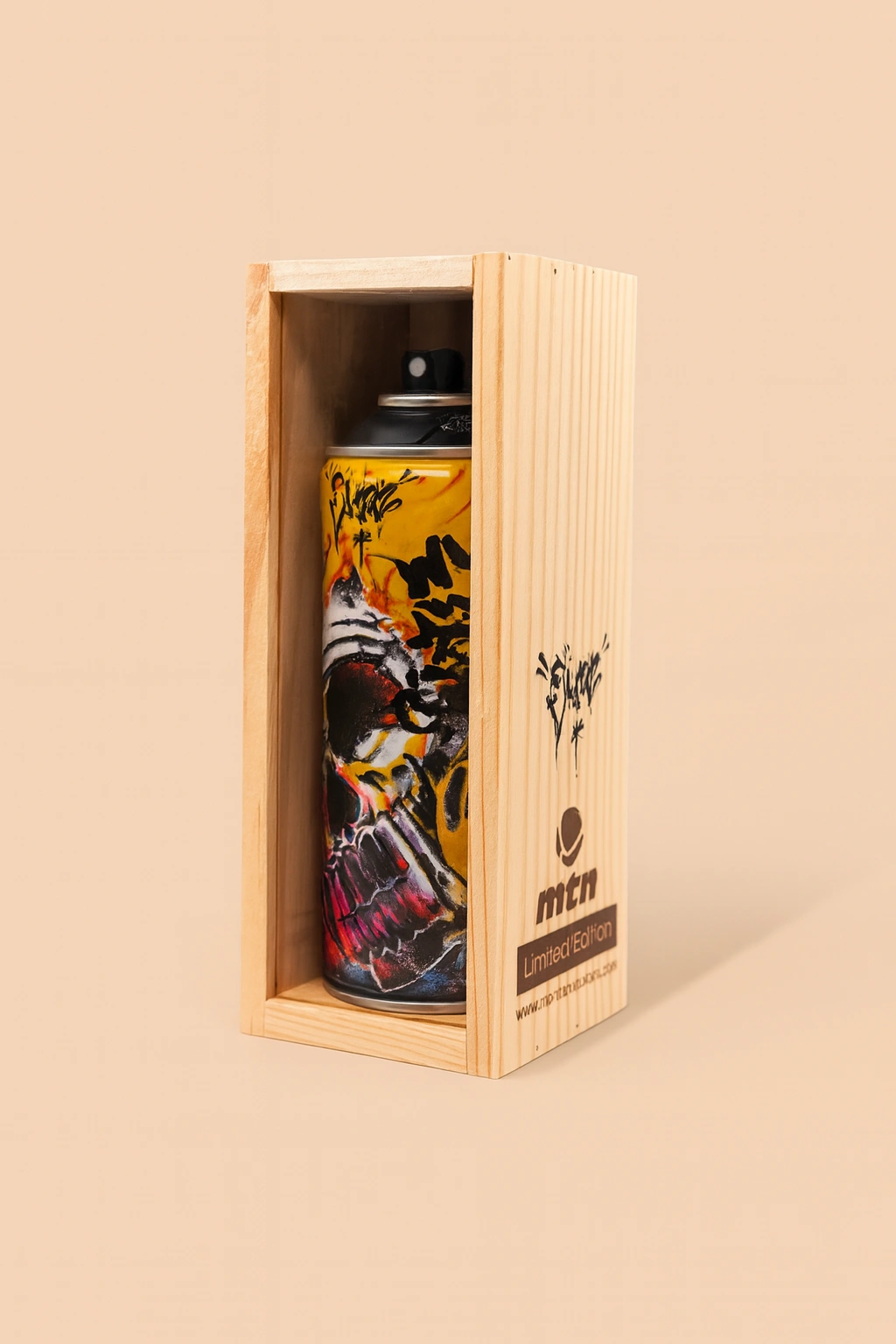At a glance, it feels like something you’ve seen before. A young woman at a beachside café, bathed in soft sunlight. Her gaze is fixed on you, mid-bite. A heaping plate of food—chips, battered fish, condiments—dominates the foreground. It could be an Instagram photo, the kind someone posts without much thought. But this isn’t a photo. It’s a painting.
And in that realization, Fish & Chips begins to shift. It isn’t casual. It isn’t disposable. It’s deliberate. It’s calculated. And most of all—it’s critical.
Nir Hadar’s hyperrealist painting captures not just a moment, but the entire structure of modern visual culture. He hijacks the language of photography, filters, and advertising, and repurposes it to provoke, rather than pacify. The result is a stunning work of subversion that uses realism not to celebrate the surface, but to peel it apart.
Surface and Seduction
Let’s begin with the surface, because that’s what Hadar makes impossible to ignore. The realism is intense. Every glint of grease, the humidity trapped in the condensation of the drink glass, the precisely torn ketchup packet—everything is rendered with microscopic accuracy. The illusion is so complete that the viewer momentarily forgets it’s paint on canvas.
This is not photorealism for the sake of illusion. Hadar doesn’t aim to fool the eye; he aims to test the mind. The aesthetic of hyperrealism becomes a form of bait. It lures you in with visual satisfaction and then confronts you with conceptual discomfort.
The woman at the center—part model, part icon—stares with an expression that is hard to categorize. There’s no joy. No seduction. No invitation. Her face says: Are you looking at me or the food? Do you want me here, or do I just come with the set? Her hand holds a chip, but her posture is static, almost suspended, as though this act of eating is a ritual more than nourishment.
This is not a portrait of someone enjoying a beach meal. This is an interrogation.
The Politics of Place
The setting is deceptively generic. Plastic chairs. Striped umbrellas. Urban high-rises in the background. It could be anywhere—Tel Aviv, Miami, Brighton, Rio. This deliberate placelessness is part of the critique. The scene looks familiar because it is familiar. It is the global beach: franchised, filtered, commercialized.
Each element reinforces the sanitized neutrality of consumer culture. The beach should be a space of escape and nature, but here it is corporate, curated, and branded. Even the design on the umbrellas is calculated—black-and-white checks, repeating endlessly like a default pattern. The chairs are printed with a stylized “C,” echoing the marking of property. This is not a public beach. This is a branded environment, one where experience is controlled and monetized.
And within this system, the woman becomes both subject and product. She’s presented to us as if she were part of the meal. The red swimsuit, the carefully undone hair, the symmetrical composition—it’s visual marketing. But Hadar flips the narrative. She’s not smiling. She’s not submissive. She’s not playing along. Her gaze is confrontational, not performative. She knows what this world expects of her and chooses not to comply.
Consumption as Theme
The title, Fish & Chips, might first strike the viewer as lighthearted, even nostalgic. It conjures memories of seaside towns, newspaper-wrapped dinners, vinegar-drenched lunches on the pier. It’s a dish loaded with cultural memory, especially in the UK, but its global footprint makes it instantly legible almost anywhere.
Yet here, Fish & Chips is not about food—it’s about consumption.
Everything in the frame is consumable: the food, the beach, the woman, the moment. Hadar captures a society obsessed with visuals, in which experience is not lived but staged for others. The painting presents the act of eating as performance, and the meal as a product designed more for viewing than tasting. The chips are neatly cooked as golden. The fish fillets are spaced like props. Nothing is messy, spontaneous, or real.
Even the condiments—ketchup packets, mayonnaise, mustard—are arranged like marketing assets. They’re not tools for flavor. They’re accessories.
What Hadar critiques is not food, but the way we consume images of food, bodies, vacations, pleasure. It’s the lifestyle-industrial complex rendered in oil paint.
Art Historical Context
To understand the depth of Fish & Chips, it’s useful to place it in the lineage of art history. This painting is a 21st-century still life. Like the Dutch vanitas paintings of the 17th century, it uses objects—food, drink, personal effects—to explore mortality and meaning. But where the Dutch warned against excess with skulls and extinguished candles, Hadar uses consumer goods.
It also echoes Pop Art. Think Andy Warhol’s Campbell’s soup cans, only updated for the influencer age. Like Warhol, Hadar interrogates the symbols of everyday culture, but unlike Warhol, he injects them with an uncomfortable realism. Warhol flattened. Hadar sharpens.
There are also echoes of Cindy Sherman in the woman’s expression and the staged quality of the scene. Sherman constructed personas to critique the male gaze. Hadar’s subject is not a persona—she’s a mirror. The viewer is the one being examined.
Medium as Message
It matters profoundly that this work is a painting. Hadar could have snapped this scene with a camera. He could have digitally edited it, filtered it, printed it. But he didn’t. He painted it, and by doing so, he reclaims time and labor in a world of instant media.
Painting, especially at this level of detail, requires presence. It is the antithesis of the disposable image. In making the ephemeral permanent, Hadar forces the viewer to slow down. To sit with discomfort. To examine every detail not as a passive consumer but as a witness.
This process—the act of turning digital aesthetics into analog material—reverses the flow of attention. It challenges us to ask: What have we sacrificed for convenience? What stories have we lost in the rush to share?
The Emotional Core
Beneath the critique, there’s an emotional undercurrent to Fish & Chips. It’s not just visual commentary. It’s quietly mournful.
There’s a loneliness in the scene. The woman is alone. The chairs around her are empty. The beach is sparse, eerily quiet. For all its color and polish, the painting radiates a kind of still sadness. It speaks to a generation hyperconnected and yet fundamentally isolated. A generation fed more images than touch. More followers than friends.
And in this, Hadar’s work stops being ironic and becomes deeply human. The painting is not mocking us. It’s inviting us to feel the gap between what we’re sold and what we actually want.
A New Realism
Fish & Chips is part of a growing movement in contemporary art that uses realism not as an endpoint, but as a weapon. It’s not about nostalgia for technique. It’s about what realism can do—how it can make the familiar strange, how it can restore friction to a culture that prizes smoothness above all.
Hadar’s painting doesn’t simply show us what we already see. It shows us what we ignore. The contradiction between performance and presence. The flattening of identity into image. The hunger that lingers even after we’re full.
And in choosing a subject as humble, as ordinary, as iconic as fish and chips, Hadar makes that tension undeniable. This isn’t a five-star meal. This is everyday indulgence. This is a dish that doesn’t ask questions. But the painting does.
Impression
We eat with our eyes now. Our feeds are full of food we’ll never taste, people we’ll never meet, places we’ll never go. Fish & Chips interrupts that cycle. It demands that we look again—longer, harder, slower.
It tells us that what we consume defines us, not just in body but in spirit. It asks us: What are we really hungry for?
Nir Hadar doesn’t answer that question. He just holds up the mirror. And in that reflection, amid the glare of sun and sauce, we might see more than we expected.
No comments yet.








